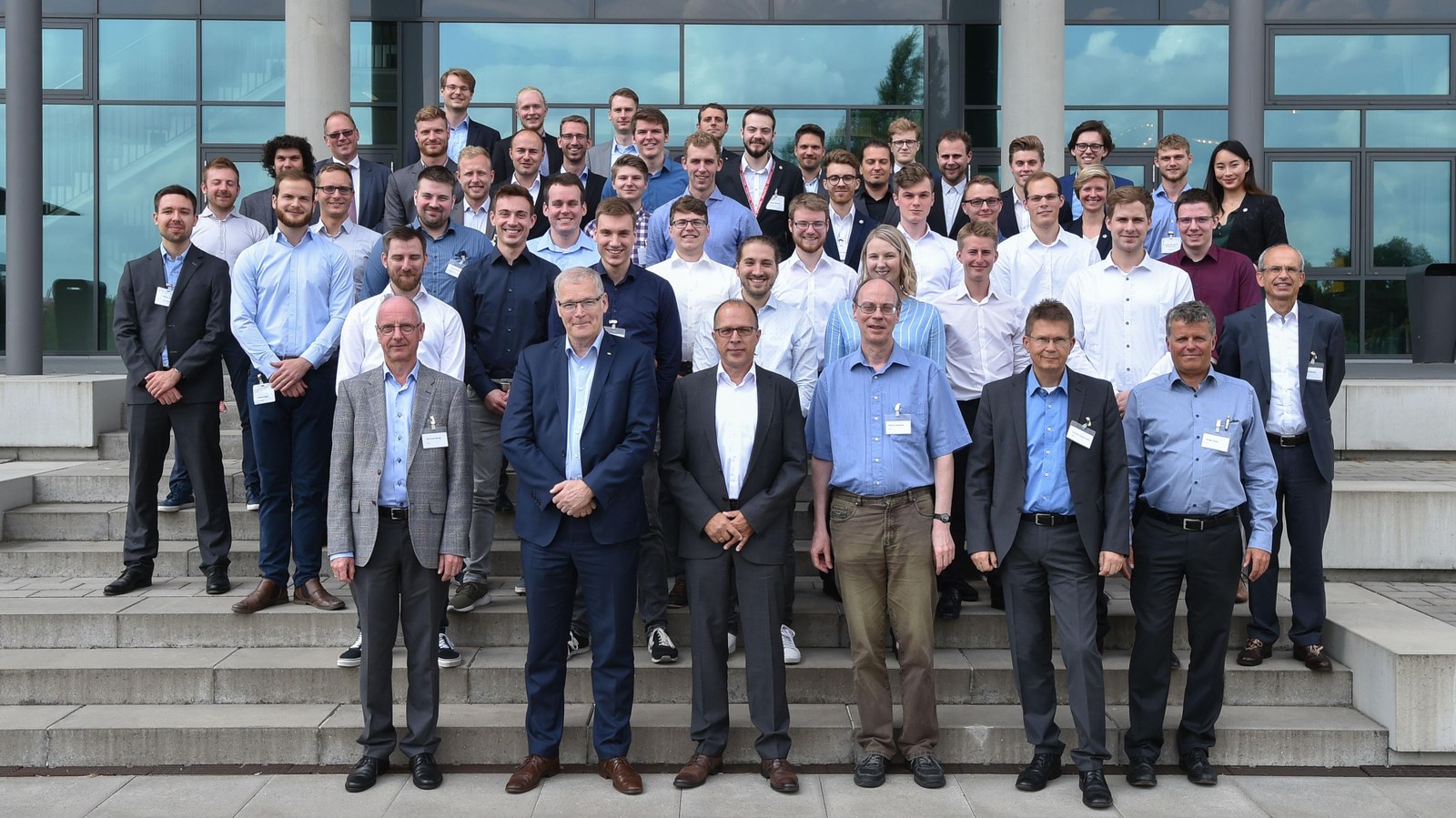DLR jury selects the winning German team for this year's NASA/DLR Design Challenge



- With their HyBird design, the students from the University of Stuttgart convince the jury of experts from DLR aeronautics research led by DLR Executive Board member Rolf Henke.
- The NASA/DLR Design Challenge set the contestants the task of devising concepts for small, flexible and environment-friendly aircraft for connecting remote regions of the world with major cities.
- Focus: Aeronautics, uncrewed and electric flight, urbanisation, education and outreach
A team from the University of Stuttgart won the German part of this year's NASA/DLR Design Challenge for their HyBird design on 1 August 2019. This year is the third in which the student competition has taken place, and was dedicated to connecting remote regions of the Earth with major metropolises. The German Aerospace Center (Deutsches Zentrum für Luft- und Raumfahrt; DLR) and the US space agency NASA called upon students from technical universities in Germany and the United States to participate in the ideas competition. The closing ceremony for the teams in Germany was hosted by the Center of Applied Aeronautical Research (ZAL) in Hamburg.
Reaching Earth's rural regions in a cost-effective, environment-friendly way
Establishing flight routes to remote regions is highly difficult to accomplish cost-effectively due to low passenger volumes. In such cases, dual use as a crewed passenger aircraft by day and an uncrewed cargo aircraft by night could provide a solution. However, many technical factors need to be considered: Can the weight, geometry and drive technology of an aircraft be optimised in such a way that small aircraft with low-carbon and emission systems are able to achieve a sufficient range? Can this be done with fully electric propulsion systems? Or are hybrid systems with supporting gas or fuel cell technology required to provide maximum power at take-off?
Tackling this problem requires fresh ideas and concepts for small, eco-efficient aircraft. "This is the objective that we are pursuing with the Design Challenge, together with our colleagues in aviation at NASA. We want to encourage students on technical courses to think outside the box, be innovative and think laterally. They should not simply further develop what already exists, but also break completely new ground in aircraft design,” says Henke, Chairman of the jury. "Today, design is again an especially important factor in aviation. New elements such as electrification and automation are highly complex and require cutting-edge concepts."
Of all the high-quality entries, the DLR jury was most impressed by the concept from the University of Stuttgart. With their well-founded market analysis, the fulfilment of all design criteria, a clever combination of technologies and the creative configuration of the HyBird, the team had the decisive lead. The HyBird design features an aircraft with high wing configuration with a Coanda flap system, a V-tail, and conventional fuselage. The jury rated the choice of a hybrid propulsion system with two turbines for power generation and the option of switching off a system during cruising as a very innovative approach to energy efficiency. This opens up the possibility of low consumption, especially at cruising speed. A ‘battery boost’ of up to 180 kilowatts enable a fully electric take-off. The students also reduced noise emissions through the position and size of the drives. The members of the jury were also impressed by the students’ realistic calculations for operating costs, and ideas for easily converting a commuter aircraft to a cargo configuration were the cherry on top.
The team from RWTH Aachen came in second place with their aDEPt design. Third place was shared by the teams from TU Berlin for their MIRUS concept, TU Dresden with Xargo and TU Hamburg with rAPID, which were all strong designs with numerous innovative aspects, well-founded calculations and analysis, and fresh new ideas. The short videos that the teams produced to supplement the media presentation of their teams and concepts were a particular highlight this year. The jury was impressed with the quality of the designs, with particular praise going to the impressive videos and presentations by TU Berlin and TU Hamburg.
- NASA/DLR Design Challenge 2018/2019 overview
Once again, the students had to meet the jury’s high requirements for efficient designs. Their aircraft configurations had to be suitable for very short runways, while also having an acceptable cruising speed. New technology from a variety of disciplines had to be integrated into the designs, including an examination of concepts that would allow the quick conversion from passenger to freight transport at short notice. They also considered whether an interdependence between passenger flights with pilots and automated, unmanned freight flights might increase the commercial viability of such aircraft for airlines currently in operation.
Five teams consisting of around 40 students submitted innovative designs. The kick-off meeting took place on 12 April 2019 at the DLR site in Braunschweig. This included an introduction to the task and a tour of the site. The German expert jury, which included the directors of various DLR aeronautics institutes and Rolf Henke, announced the winning team after the closing presentations on 1 August 2019 at the ZAL in Hamburg. The winners will travel to NASA in the USA in September 2019 to present their design alongside that of the winning US team during a symposium of aviation experts.
Professor Henke launched the NASA/DLR Design Challenge with NASA’s Associate Administrator for Aeronautics, Dr Jaiwon Shin. This is the third time that this competition has been held. Every year, it offers students at technical universities in Germany and the USA the chance to work on pressing real-life issues in modern aviation.
